DCM for f MRI Advanced topics Klaas Enno


















































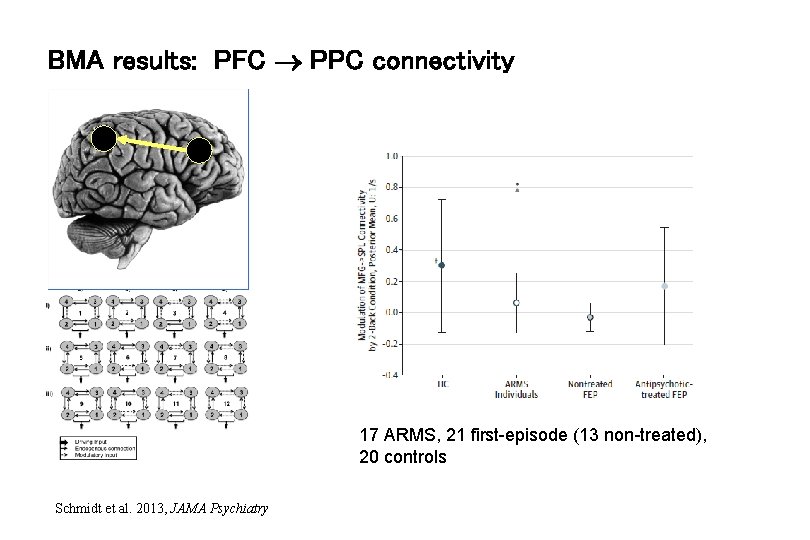
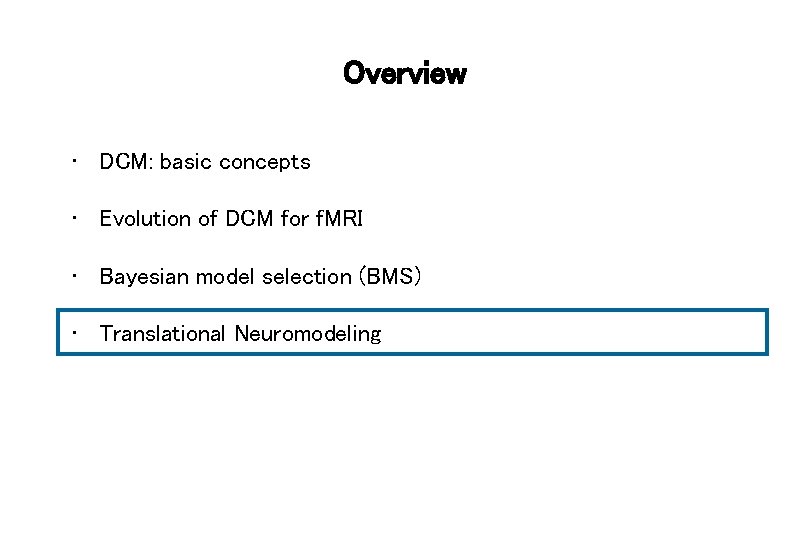
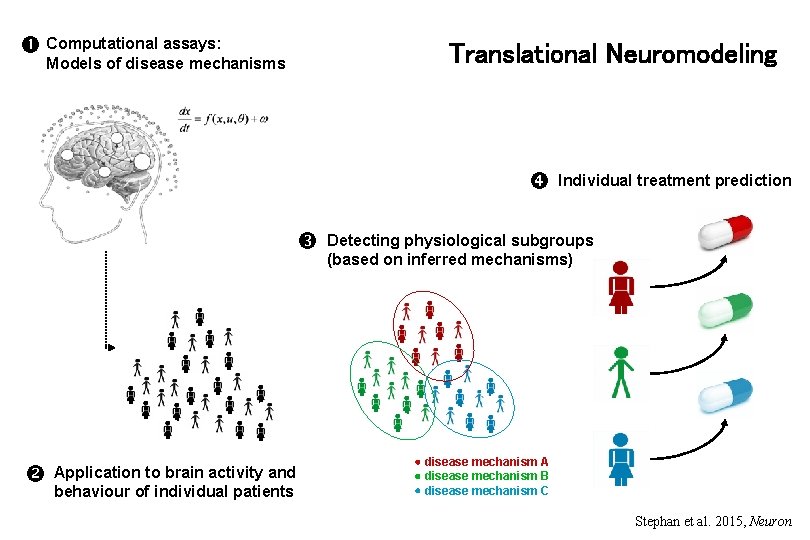
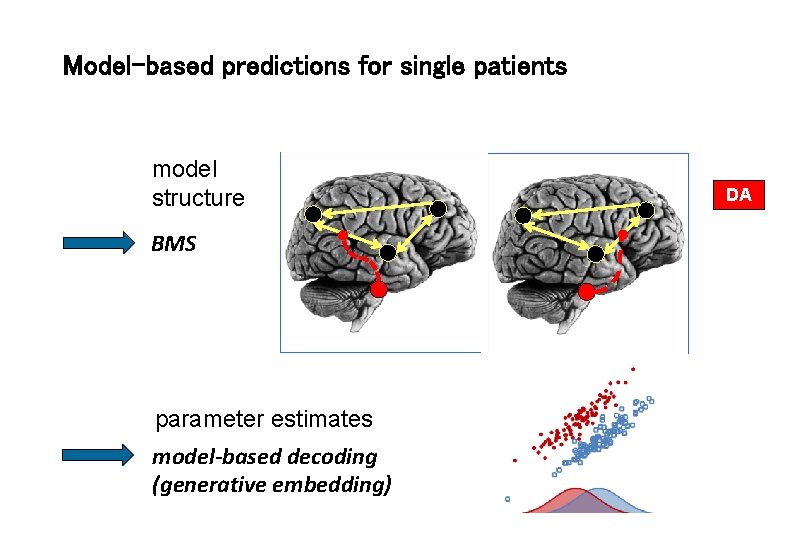
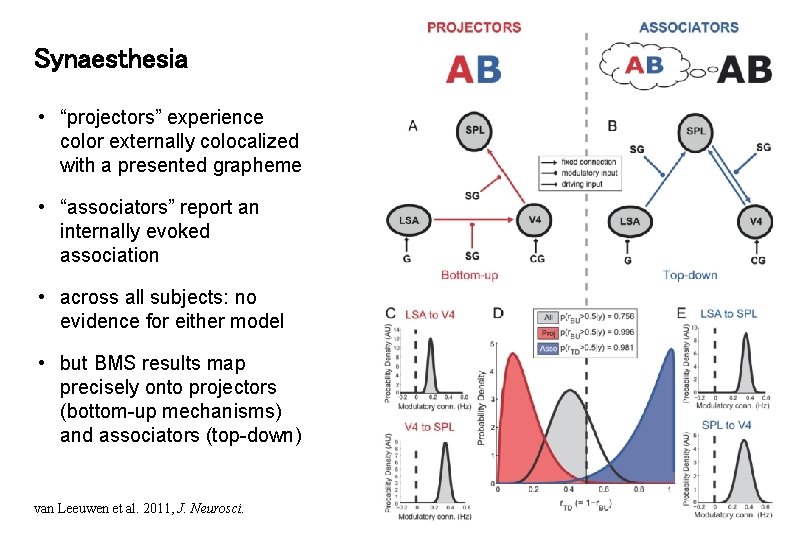
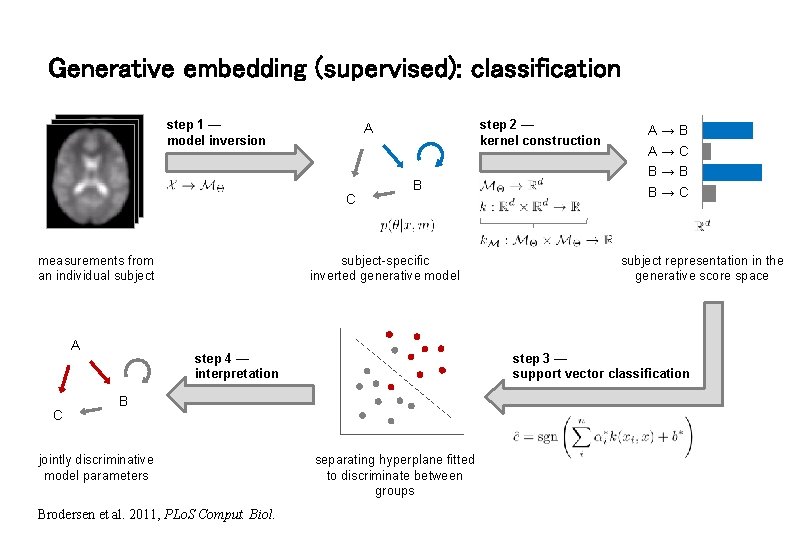
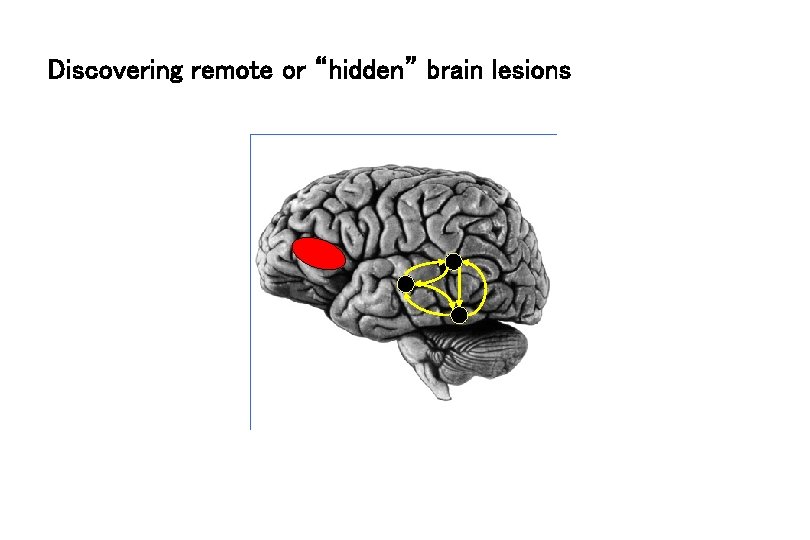
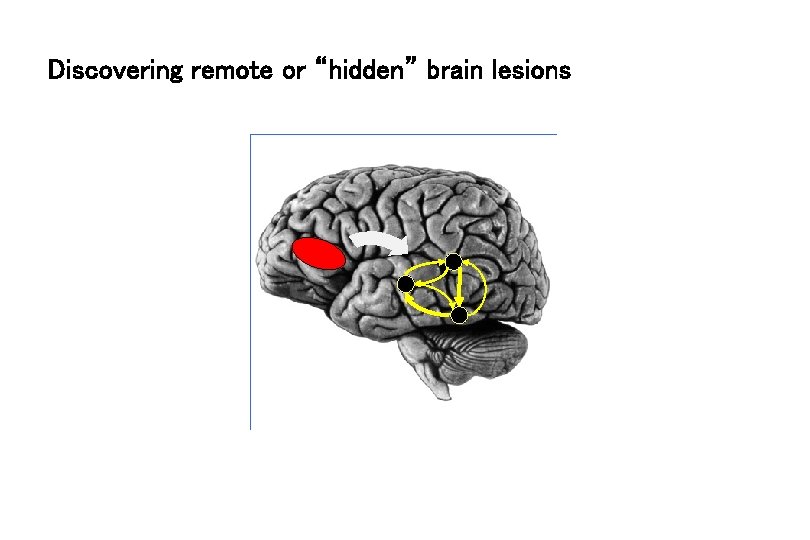
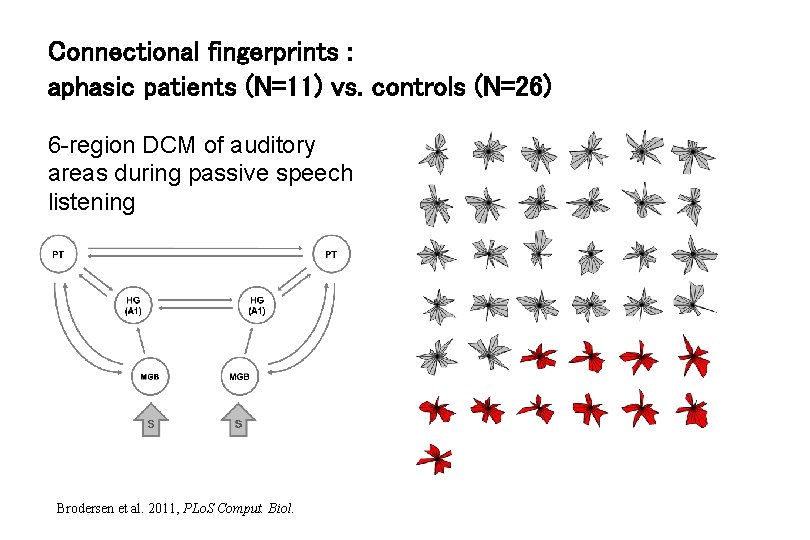
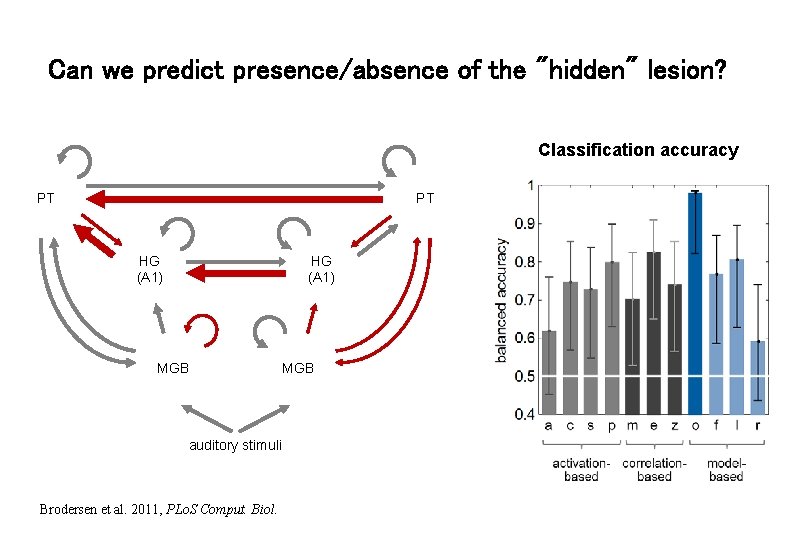
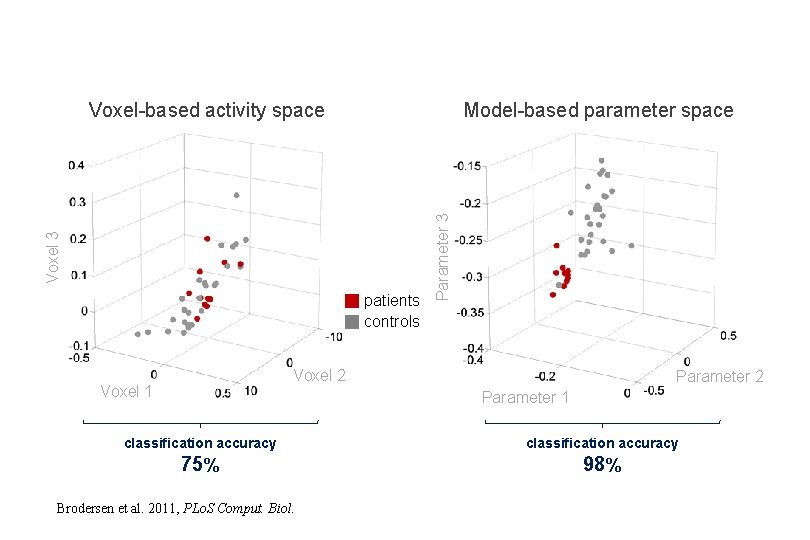
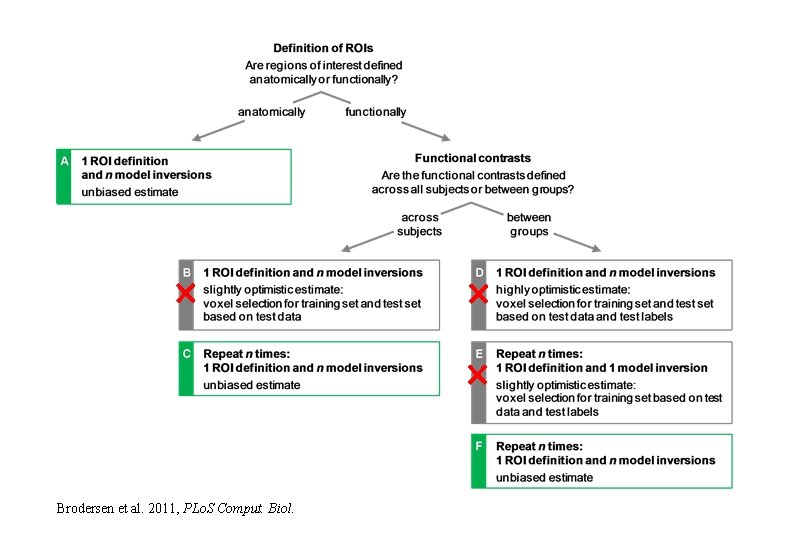
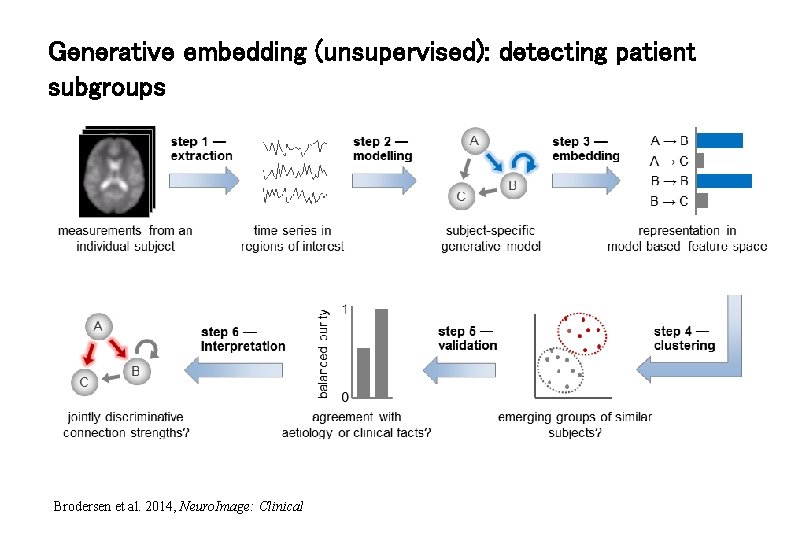
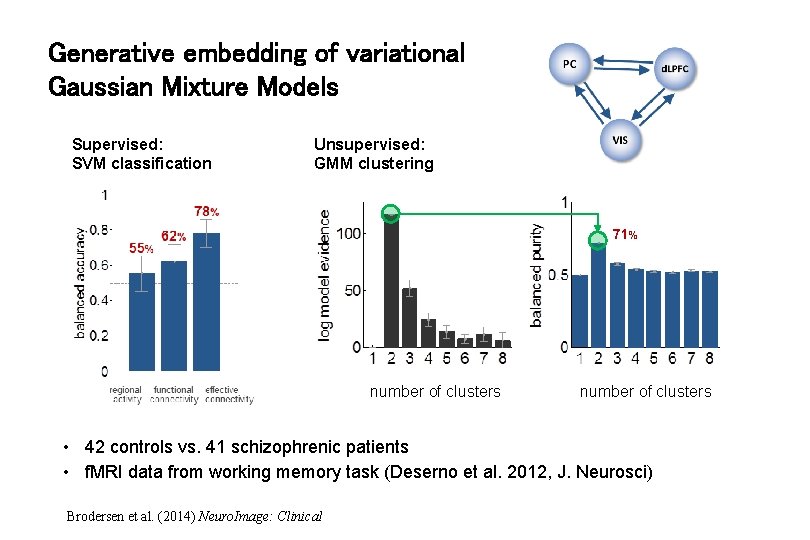
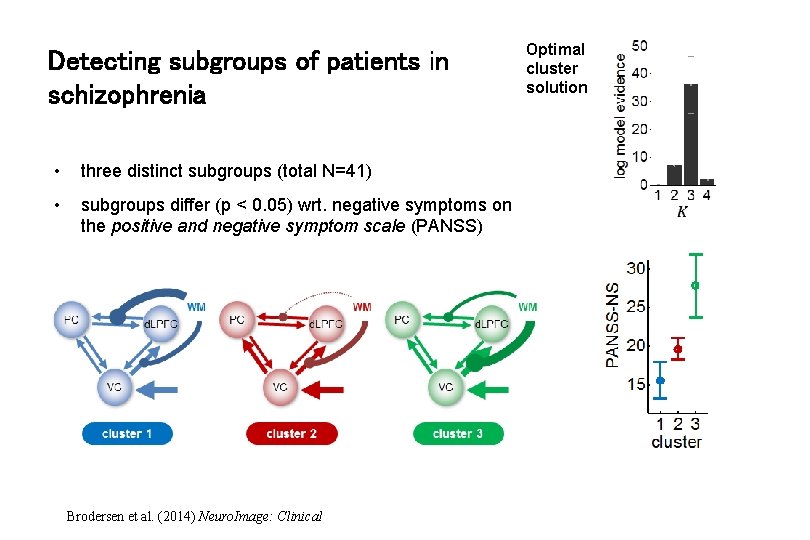
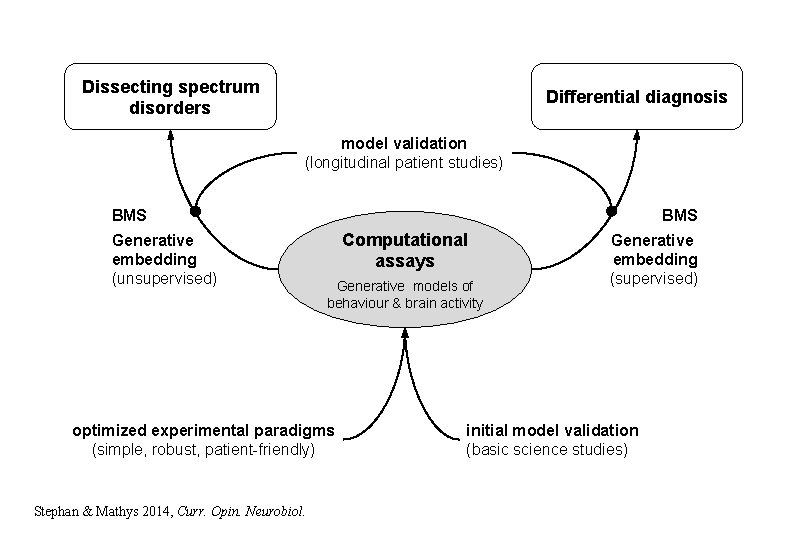
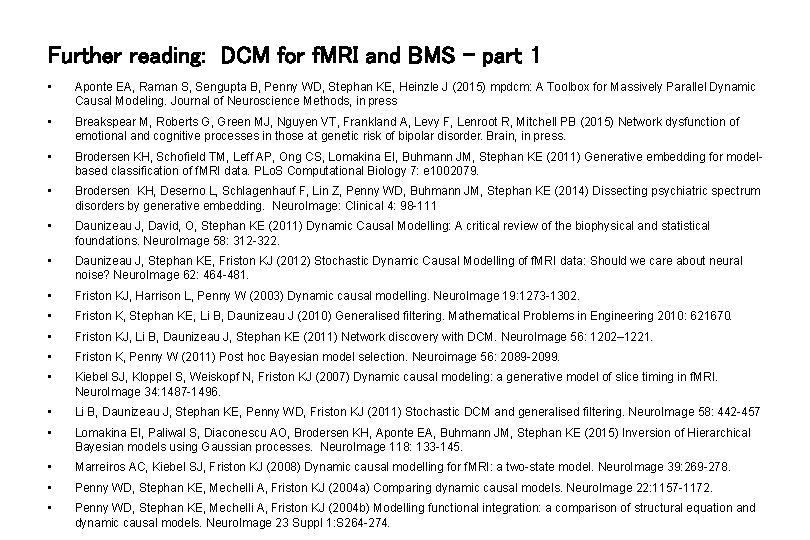
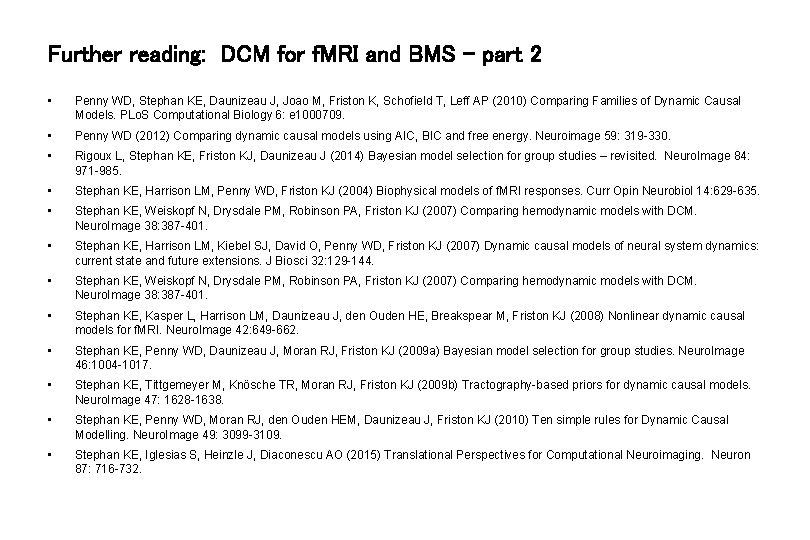
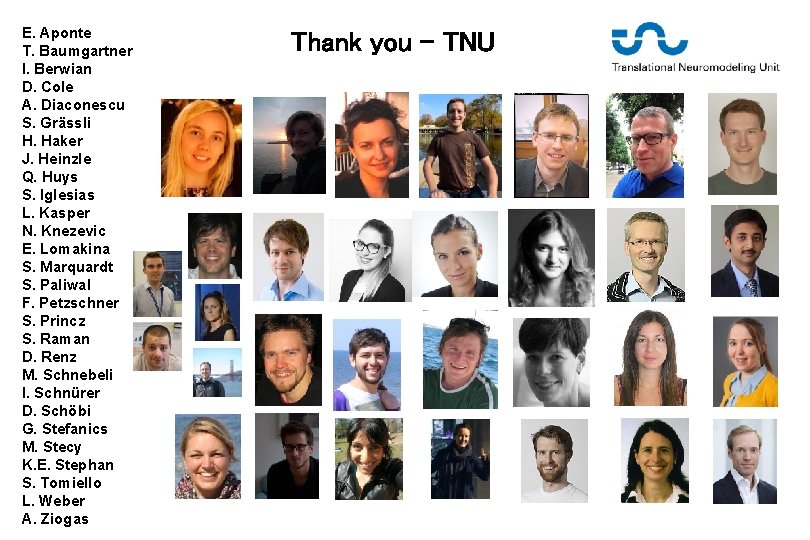
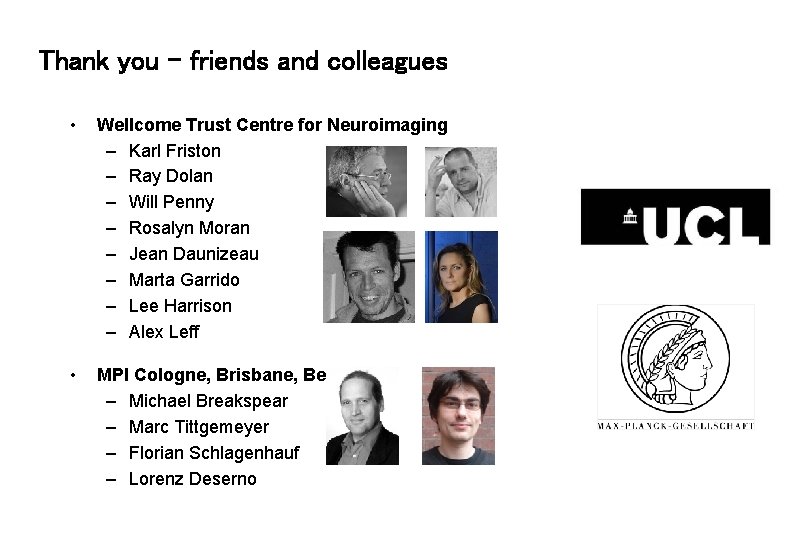
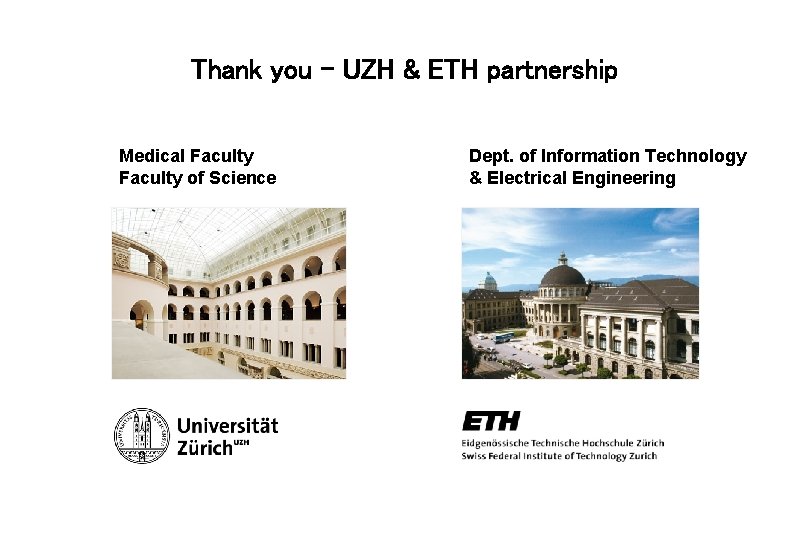

- Slides: 72

DCM for f. MRI – Advanced topics Klaas Enno Stephan

Overview • DCM: basic concepts • Evolution of DCM for f. MRI • Bayesian model selection (BMS) • Translational Neuromodeling

Dynamic causal modeling (DCM) dw. MRI f. MRI EEG, MEG s rior p l a r tu struc Forward model: Predicting measured activity struc tura l prio rs Model inversion: Estimating neuronal mechanisms

Generative model 1. enforces mechanistic thinking: how could the data have been caused? 2. generate synthetic data (observations) by sampling from the prior – can model explain certain phenomena at all? 3. inference about model structure: formal approach to disambiguating mechanisms → p(m|y) 4. inference about parameters → p( |y)

Modulatory input Driving input u 2(t) t Neuronal state equation u 1(t) t endogenous connectivity modulation of connectivity direct inputs Local hemodynamic state equations Hemodynamic model Balloon model BOLD signal change equation BOLD signal y(t) vasodilatory signal and flow induction (r. CBF) Stephan et al. 2015, Neuron

Bayesian system identification Design experimental inputs Neural dynamics Define likelihood model Observer function Specify priors Inference on model structure Invert model Inference on parameters Make inferences

Variational Bayes (VB) hypothesis class

Variational Bayes initialization … … convergence

Mean field assumption Jean Daunizeau, www. fil. ion. ucl. ac. uk/ ~jdaunize/presentations/Bayes 2. pdf

VB in a nutshell (mean-field approximation) Neg. free-energy approx. to model evidence. Mean field approx. Maximise neg. free energy wrt. q = minimise divergence, by maximising variational energies Iterative updating of sufficient statistics of approx. posteriors by gradient ascent.

DCM: methodological developments • Local extrema global optimisation schemes for model inversion – MCMC (Gupta et al. 2015, Neuro. Image) – Gaussian processes (Lomakina et al. 2015, Neuro. Image) • Sampling-based estimates of model evidence – Aponte et al. 2015, J. Neurosci. Meth. – Raman et al. , in preparation • Choice of priors empirical Bayes – Friston et al. , submitted – Raman et al. , submitted

mpdcm: massively parallel DCM mpdcm_integrate(dcms) www. translationalneuromodeling. org/tapas Aponte et al. 2015. , J. Neurosci Meth.

Overview • DCM: basic concepts • Evolution of DCM for f. MRI • Bayesian model selection (BMS) • Translational Neuromodeling

The evolution of DCM in SPM • DCM is not one specific model, but a framework for Bayesian inversion of dynamic system models • The implementation in SPM has been evolving over time, e. g. – improvements of numerical routines (e. g. , optimisation scheme) – change in priors to cover new variants (e. g. , stochastic DCMs) – changes of hemodynamic model To enable replication of your results, you should ideally state which SPM version (release number) you are using when publishing papers.

Factorial structure of model specification • Three dimensions of model specification: – bilinear vs. nonlinear – single-state vs. two-state (per region) – deterministic vs. stochastic

y y BOLD y activity x 2(t) neuronal states t Neural state equation endogenous connectivity The classical DCM: a deterministic, one-state, bilinear model hemodynamic model x integration modulatory input u 2(t) t λ activity x 3(t) activity x 1(t) driving input u 1(t) y modulation of connectivity direct inputs

bilinear DCM non-linear DCM modulation driving input modulation Two-dimensional Taylor series (around x 0=0, u 0=0): Bilinear state equation: Nonlinear state equation:

Neural population activity u 2 u 1 x 3 x 2 f. MRI signal change (%) Nonlinear Dynamic Causal Model for f. MRI Stephan et al. 2008, Neuro. Image

Two-state DCM Single-state DCM Two-state DCM input Marreiros et al. 2008, Neuro. Image Extrinsic (between-region) coupling Intrinsic (withinregion) coupling

Stochastic DCM • all states are represented in generalised coordinates of motion • random state fluctuations w(x) account for endogenous fluctuations, have unknown precision and smoothness two hyperparameters • fluctuations w(v) induce uncertainty about how inputs influence neuronal activity • can be fitted to resting state data Li et al. 2011, Neuro. Image Estimates of hidden causes and states (Generalised filtering)

Spectral DCM • deterministic model that generates predicted cross-spectra in a distributed neuronal network or graph • finds the effective connectivity among hidden neuronal states that best explains the observed functional connectivity among hemodynamic responses • advantage: – replaces an optimisation problem wrt. stochastic differential equations with a deterministic approach from linear systems theory → computationally very efficient • disadvantages: – assumes stationarity Friston et al. 2014, Neuro. Image

Cross-correlation & convolution • cross-correlation = measure of similarity of two waveforms as a function of the time-lag of one relative to the other – slide two functions over each other and measure overlaps at all lags • related to the pdf of the difference beteween two random variables → a general measure of similarity between two time series Source: Wikipedia

cross-spectra = Fourier transform of cross-correlation = generalized form of correlation (at zero lag, this is the conventional measure of functional connectivity) Friston et al. 2014, Neuro. Image

“All models are wrong, but some are useful. ” George E. P. Box (1919 -2013)

Hierarchical strategy for model validation in silico humans animals & humans patients numerical analysis & simulation studies For DCM: >15 published validation studies (incl. 6 animal studies): • infers site of seizure origin (David et al. 2008) • infers primary recipient of vagal nerve stimulation (Reyt et al. 2010) • infers synaptic changes as predicted by microdialysis (Moran et al. 2008) • infers fear conditioning induced plasticity in amygdala (Moran et al. 2009) • tracks anaesthesia levels (Moran et al. 2011) • predicts sensory stimulation (Brodersen et al. 2010) cognitive experiments experimentally controlled system perturbations clinical utility

Overview • DCM: basic concepts • Evolution of DCM for f. MRI • Bayesian model selection (BMS) • Translational Neuromodeling

Generative models & model selection • any DCM = a particular generative model of how the data (may) have been caused • generative modelling: comparing competing hypotheses about the mechanisms underlying observed data a priori definition of hypothesis set (model space) is crucial determine the most plausible hypothesis (model), given the data • model selection model validation! model validation requires external criteria (external to the measured data)

Model comparison and selection Given competing hypotheses on structure & functional mechanisms of a system, which model is the best? Which model represents the best balance between model fit and model complexity? For which model m does p(y|m) become maximal? Pitt & Miyung (2002) TICS

Bayesian model selection (BMS) Model evidence: p(y|m) Gharamani, 2004 y accounts for both accuracy and complexity of the model allows for inference about model structure all possible datasets Various approximations, e. g. : - negative free energy, AIC, BIC Mc. Kay 1992, Neural Comput. Penny et al. 2004 a, Neuro. Image

Approximations to the model evidence in DCM Logarithm is a monotonic function Maximizing log model evidence = Maximizing model evidence Log model evidence = balance between fit and complexity No. of parameters Akaike Information Criterion: No. of data points Bayesian Information Criterion: Penny et al. 2004 a, Neuro. Image

The (negative) free energy approximation F Neg. free energy is a lower bound on log model evidence: Like AIC/BIC, F is an accuracy/complexity tradeoff:

The complexity term in F • In contrast to AIC & BIC, the complexity term of the negative free energy F accounts for parameter interdependencies. • The complexity term of F is higher – the more independent the prior parameters ( effective DFs) – the more dependent the posterior parameters – the more the posterior mean deviates from the prior mean

Bayes factors To compare two models, we could just compare their log evidences. But: the log evidence is just some number – not very intuitive! A more intuitive interpretation of model comparisons is made possible by Bayes factors: positive value, [0; [ Kass & Raftery classification: Kass & Raftery 1995, J. Am. Stat. Assoc. B 12 p(m 1|y) Evidence 1 to 3 50 -75% weak 3 to 20 75 -95% positive 20 to 150 95 -99% strong 150 99% Very strong

Fixed effects BMS at group level Group Bayes factor (GBF) for 1. . . K subjects: Average Bayes factor (ABF): Problems: - blind with regard to group heterogeneity - sensitive to outliers

Random effects BMS for heterogeneous groups Dirichlet parameters = “occurrences” of models in the population Dirichlet distribution of model probabilities r Multinomial distribution of model labels m Measured data y Model inversion by Variational Bayes (VB) or MCMC Stephan et al. 2009 a, Neuro. Image Penny et al. 2010, PLo. S Comp. Biol.

Random effects BMS for heterogeneous groups Dirichlet parameters = “occurrences” of models in the population k = 1. . . K rk Dirichlet distribution of model probabilities r mnk yn Multinomial distribution of model labels m n = 1. . . N Measured data y Model inversion by Variational Bayes (VB) or MCMC Stephan et al. 2009 a, Neuro. Image Penny et al. 2010, PLo. S Comp. Biol.

LD m 2 MOG FG LD|LVF MOG FG LD|RVF MOG LD|LVF LG LG RVF stim. LD FG m 2 MOG FG LD LD LG LVF stim. m 1 RVF LD|RVF stim. LG LVF stim. m 1 Data: Stephan et al. 2003, Science Models: Stephan et al. 2007, J. Neurosci.

m 2 Stephan et al. 2009 a, Neuro. Image m 1

How can we report the results of random effects BMS? 1. Dirichlet parameter estimates 2. expected posterior probability of obtaining the k-th model for any randomly selected subject 3. exceedance probability that a particular model k is more likely than any other model (of the K models tested), given the group data 4. protected exceedance probability: see below

Overfitting at the level of models • #models risk of overfitting posterior model probability: • solutions: – regularisation: definition of model space = choosing priors p(m) – family-level BMS – Bayesian model averaging (BMA) BMA:

Model space partitioning: comparing model families m 2 m 1 m 2 Stephan et al. 2009, Neuro. Image

Bayesian Model Averaging (BMA) • abandons dependence of parameter inference on a single model and takes into account model uncertainty • represents a particularly useful alternative – when none of the models (or model subspaces) considered clearly outperforms all others – when comparing groups for which the optimal model differs single-subject BMA: group-level BMA: NB: p(m|y 1. . N) can be obtained by either FFX or RFX BMS Penny et al. 2010, PLo. S Comput. Biol.

Protected exceedance probability: Using BMA to protect against chance findings • EPs express our confidence that the posterior probabilities of models are different – under the hypothesis H 1 that models differ in probability: rk 1/K • does not account for possibility "null hypothesis" H 0: rk=1/K • Bayesian omnibus risk (BOR) of wrongly accepting H 1 over H 0: • protected EP: Bayesian model averaging over H 0 and H 1: Rigoux et al. 2014, Neuro. Image

definition of model space inference on model structure or inference on model parameters? inference on individual models or model space partition? optimal model structure assumed to be identical across subjects? yes FFX BMS comparison of model families using FFX or RFX BMS inference on parameters of an optimal model or parameters of all models? optimal model structure assumed to be identical across subjects? yes no FFX BMS RFX BMS no RFX BMS Stephan et al. 2010, Neuro. Image FFX analysis of parameter estimates (e. g. BPA) RFX analysis of parameter estimates (e. g. t-test, ANOVA) BMA

Two empirical example applications Breakspear et al. 2015, Brain Schmidt et al. 2013, JAMA Psychiatry

Go/No-Go task to emotional faces (bipolar patients, at-risk individuals, controls) • Hypoactivation of left IFG in the at-risk group during fearful distractor trials • DCM used to explain interaction of motor inhibition and fear perception • That is: what is the most likely circuit mechanism explaining the fear x inhibition interaction in IFG? Breakspear et al. 2015, Brain

Model space • models of serial (1 -3), parallel (4) and hierarchical (5 -8) processes Breakspear et al. 2015, Brain

Family-level BMS • family-level comparison: nonlinear models more likely than bilinear ones in both healthy controls and bipolar patients • at-risk group: bilinear models more likely • significant group difference in ACC modulation of DLPFC→IFG interaction Breakspear et al. 2015, Brain

Prefrontal-parietal connectivity during working memory in schizophrenia • 17 at-risk mental state (ARMS) individuals • 21 first-episode patients (13 non-treated) • 20 controls Schmidt et al. 2013, JAMA Psychiatry

BMS results for all groups Schmidt et al. 2013, JAMA Psychiatry

BMA results: PFC PPC connectivity 17 ARMS, 21 first-episode (13 non-treated), 20 controls Schmidt et al. 2013, JAMA Psychiatry

Overview • DCM: basic concepts • Evolution of DCM for f. MRI • Bayesian model selection (BMS) • Translational Neuromodeling

Computational assays: Translational Neuromodeling Models of disease mechanisms Application to brain activity and behaviour of individual patients Individual treatment prediction Detecting physiological subgroups (based on inferred mechanisms) disease mechanism A disease mechanism B disease mechanism C Stephan et al. 2015, Neuron

Model-based predictions for single patients model structure BMS parameter estimates model-based decoding (generative embedding) DA

Synaesthesia • “projectors” experience color externally colocalized with a presented grapheme • “associators” report an internally evoked association • across all subjects: no evidence for either model • but BMS results map precisely onto projectors (bottom-up mechanisms) and associators (top-down) van Leeuwen et al. 2011, J. Neurosci.

Generative embedding (supervised): classification step 1 — model inversion C measurements from an individual subject A C step 2 — kernel construction A B subject-specific inverted generative model B Brodersen et al. 2011, PLo. S Comput. Biol. subject representation in the generative score space step 3 — support vector classification step 4 — interpretation jointly discriminative model parameters A→B A→C B→B B→C separating hyperplane fitted to discriminate between groups

Discovering remote or “hidden” brain lesions

Discovering remote or “hidden” brain lesions

Connectional fingerprints : aphasic patients (N=11) vs. controls (N=26) 6 -region DCM of auditory areas during passive speech listening Brodersen et al. 2011, PLo. S Comput. Biol.

Can we predict presence/absence of the "hidden" lesion? Classification accuracy PT PT HG (A 1) MGB auditory stimuli Brodersen et al. 2011, PLo. S Comput. Biol. MGB

patients controls Parameter 3 Model-based parameter space Voxel 3 Voxel-based activity space Voxel 2 Voxel 1 Parameter 2 Parameter 1 classification accuracy 75% 98% Brodersen et al. 2011, PLo. S Comput. Biol.

Brodersen et al. 2011, PLo. S Comput. Biol.

Generative embedding (unsupervised): detecting patient subgroups Brodersen et al. 2014, Neuro. Image: Clinical

Generative embedding of variational Gaussian Mixture Models Supervised: SVM classification Unsupervised: GMM clustering 71% number of clusters • 42 controls vs. 41 schizophrenic patients • f. MRI data from working memory task (Deserno et al. 2012, J. Neurosci) Brodersen et al. (2014) Neuro. Image: Clinical

Detecting subgroups of patients in schizophrenia • three distinct subgroups (total N=41) • subgroups differ (p < 0. 05) wrt. negative symptoms on the positive and negative symptom scale (PANSS) Brodersen et al. (2014) Neuro. Image: Clinical Optimal cluster solution

Dissecting spectrum disorders Differential diagnosis model validation (longitudinal patient studies) BMS Generative embedding (unsupervised) Computational assays Generative models of behaviour & brain activity optimized experimental paradigms (simple, robust, patient-friendly) Stephan & Mathys 2014, Curr. Opin. Neurobiol. Generative embedding (supervised) initial model validation (basic science studies)

Further reading: DCM for f. MRI and BMS – part 1 • Aponte EA, Raman S, Sengupta B, Penny WD, Stephan KE, Heinzle J (2015) mpdcm: A Toolbox for Massively Parallel Dynamic Causal Modeling. Journal of Neuroscience Methods, in press • Breakspear M, Roberts G, Green MJ, Nguyen VT, Frankland A, Levy F, Lenroot R, Mitchell PB (2015) Network dysfunction of emotional and cognitive processes in those at genetic risk of bipolar disorder. Brain, in press. • Brodersen KH, Schofield TM, Leff AP, Ong CS, Lomakina EI, Buhmann JM, Stephan KE (2011) Generative embedding for modelbased classification of f. MRI data. PLo. S Computational Biology 7: e 1002079. • Brodersen KH, Deserno L, Schlagenhauf F, Lin Z, Penny WD, Buhmann JM, Stephan KE (2014) Dissecting psychiatric spectrum disorders by generative embedding. Neuro. Image: Clinical 4: 98 -111 • Daunizeau J, David, O, Stephan KE (2011) Dynamic Causal Modelling: A critical review of the biophysical and statistical foundations. Neuro. Image 58: 312 -322. • Daunizeau J, Stephan KE, Friston KJ (2012) Stochastic Dynamic Causal Modelling of f. MRI data: Should we care about neural noise? Neuro. Image 62: 464 -481. • Friston KJ, Harrison L, Penny W (2003) Dynamic causal modelling. Neuro. Image 19: 1273 -1302. • Friston K, Stephan KE, Li B, Daunizeau J (2010) Generalised filtering. Mathematical Problems in Engineering 2010: 621670. • Friston KJ, Li B, Daunizeau J, Stephan KE (2011) Network discovery with DCM. Neuro. Image 56: 1202– 1221. • Friston K, Penny W (2011) Post hoc Bayesian model selection. Neuroimage 56: 2089 -2099. • Kiebel SJ, Kloppel S, Weiskopf N, Friston KJ (2007) Dynamic causal modeling: a generative model of slice timing in f. MRI. Neuro. Image 34: 1487 -1496. • Li B, Daunizeau J, Stephan KE, Penny WD, Friston KJ (2011) Stochastic DCM and generalised filtering. Neuro. Image 58: 442 -457 • Lomakina EI, Paliwal S, Diaconescu AO, Brodersen KH, Aponte EA, Buhmann JM, Stephan KE (2015) Inversion of Hierarchical Bayesian models using Gaussian processes. Neuro. Image 118: 133 -145. • Marreiros AC, Kiebel SJ, Friston KJ (2008) Dynamic causal modelling for f. MRI: a two-state model. Neuro. Image 39: 269 -278. • Penny WD, Stephan KE, Mechelli A, Friston KJ (2004 a) Comparing dynamic causal models. Neuro. Image 22: 1157 -1172. • Penny WD, Stephan KE, Mechelli A, Friston KJ (2004 b) Modelling functional integration: a comparison of structural equation and dynamic causal models. Neuro. Image 23 Suppl 1: S 264 -274.

Further reading: DCM for f. MRI and BMS – part 2 • Penny WD, Stephan KE, Daunizeau J, Joao M, Friston K, Schofield T, Leff AP (2010) Comparing Families of Dynamic Causal Models. PLo. S Computational Biology 6: e 1000709. • Penny WD (2012) Comparing dynamic causal models using AIC, BIC and free energy. Neuroimage 59: 319 -330. • Rigoux L, Stephan KE, Friston KJ, Daunizeau J (2014) Bayesian model selection for group studies – revisited. Neuro. Image 84: 971 -985. • Stephan KE, Harrison LM, Penny WD, Friston KJ (2004) Biophysical models of f. MRI responses. Curr Opin Neurobiol 14: 629 -635. • Stephan KE, Weiskopf N, Drysdale PM, Robinson PA, Friston KJ (2007) Comparing hemodynamic models with DCM. Neuro. Image 38: 387 -401. • Stephan KE, Harrison LM, Kiebel SJ, David O, Penny WD, Friston KJ (2007) Dynamic causal models of neural system dynamics: current state and future extensions. J Biosci 32: 129 -144. • Stephan KE, Weiskopf N, Drysdale PM, Robinson PA, Friston KJ (2007) Comparing hemodynamic models with DCM. Neuro. Image 38: 387 -401. • Stephan KE, Kasper L, Harrison LM, Daunizeau J, den Ouden HE, Breakspear M, Friston KJ (2008) Nonlinear dynamic causal models for f. MRI. Neuro. Image 42: 649 -662. • Stephan KE, Penny WD, Daunizeau J, Moran RJ, Friston KJ (2009 a) Bayesian model selection for group studies. Neuro. Image 46: 1004 -1017. • Stephan KE, Tittgemeyer M, Knösche TR, Moran RJ, Friston KJ (2009 b) Tractography-based priors for dynamic causal models. Neuro. Image 47: 1628 -1638. • Stephan KE, Penny WD, Moran RJ, den Ouden HEM, Daunizeau J, Friston KJ (2010) Ten simple rules for Dynamic Causal Modelling. Neuro. Image 49: 3099 -3109. • Stephan KE, Iglesias S, Heinzle J, Diaconescu AO (2015) Translational Perspectives for Computational Neuroimaging. Neuron 87: 716 -732.

E. Aponte T. Baumgartner I. Berwian D. Cole A. Diaconescu S. Grässli H. Haker J. Heinzle Q. Huys S. Iglesias L. Kasper N. Knezevic E. Lomakina S. Marquardt S. Paliwal F. Petzschner S. Princz S. Raman D. Renz M. Schnebeli I. Schnürer D. Schöbi G. Stefanics M. Stecy K. E. Stephan S. Tomiello L. Weber A. Ziogas Thank you – TNU

Thank you – friends and colleagues • Wellcome Trust Centre for Neuroimaging – Karl Friston – Ray Dolan – Will Penny – Rosalyn Moran – Jean Daunizeau – Marta Garrido – Lee Harrison – Alex Leff • MPI Cologne, Brisbane, Berlin – Michael Breakspear – Marc Tittgemeyer – Florian Schlagenhauf – Lorenz Deserno

Thank you – UZH & ETH partnership Medical Faculty of Science Dept. of Information Technology & Electrical Engineering

Thank you